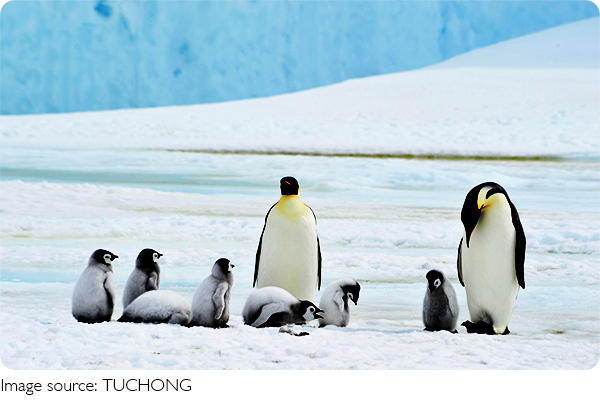Wonderous Penguins

Penguins, those adorable representatives of the Antarctic, are not just cute creatures; they are practically celebrities in the eyes of humans.
With their lovable appearance, waddling movements, flightless wings, and entertaining antics, penguins have become a household name.
However, despite their fame, there might be some lesser-known facts about these fascinating creatures that could surprise you.
1. Special Nest Building Skills
When it comes to building nests, dignity takes a back seat for penguins. Their nest-building technique involves creating a furrow in the ground and placing pebbles on it.
These stones serve as protection for the eggs when the snow melts and floods the area.
Interestingly, in penguin colonies, there are opportunistic individuals who, rather than searching for stones themselves, wait for others to gather them and then pilfer the stones for their own nests. This sometimes leads to comical and feisty confrontations.
Chipmunks defy norms, thriving through hibernation, diverse diets, and a six-to-ten-year lifespan.
Siamese fighters: Beauty meets aggression in aquatic ballet.
The joy of keeping tropical fish at home.
Cheetah's dilemma: The challenges faced by the earth's fastest cat.
Whale feeding affects the climate of nature as a whole.
You can analyze some of your cat's emotions through their facial expressions.
2. Master Swimmers
Penguins, unable to fly due to their oceanic lifestyle, spend roughly half their lives in the water and the other half on land. This adaptation has given them exceptional swimming abilities.
On average, penguins can swim at speeds of 6-10 kilometers per hour, with emperor penguins reaching an impressive 12 kilometers per hour.
Furthermore, their diving prowess is unparalleled, with some penguins capable of diving for 18 minutes, reaching depths of 265 meters. Emperor penguins, in particular, can dive for an astonishing 30 minutes and descend to 500 meters.

3. Toothless Penguins
Penguins, like most birds, lack teeth and rely on their beaks for hunting. The barbs on their tongues and throats aid in swallowing small fish and crustaceans.
While fish and crustaceans serve as side dishes, the staple of a penguin's diet is Antarctic krill.
Astonishingly, Antarctic penguins consume around 33.17 million tons of krill, half of what whales devour.
4. Unique Skeletons
Penguins boast one of the most distinctive bone structures among birds. Unlike other birds with hollow bones for flight, penguins have solid bones, as flight is not a requirement.
Their elbow and wrist bones are nearly fused, and the bones in their flippers are shorter and flatter, each attached to a muscle.
This unique skeletal arrangement allows their feathers to cling around their bodies when they dive, preventing seawater seepage. Interestingly, the hardest bones in a penguin's body are found in their legs.
5. Highly Social Creatures
Penguins are remarkably social animals, often forming colonies containing hundreds or even thousands of individuals. Whether swimming or feeding, they exhibit strong coordination within groups.
In the harsh conditions of the Antarctic, penguins huddle together for warmth, with younger birds and eggs protected at the center.
Adult penguins take turns moving every 30-60 seconds, ensuring each member enjoys the warmth.

 · Animal Team
· Animal Team